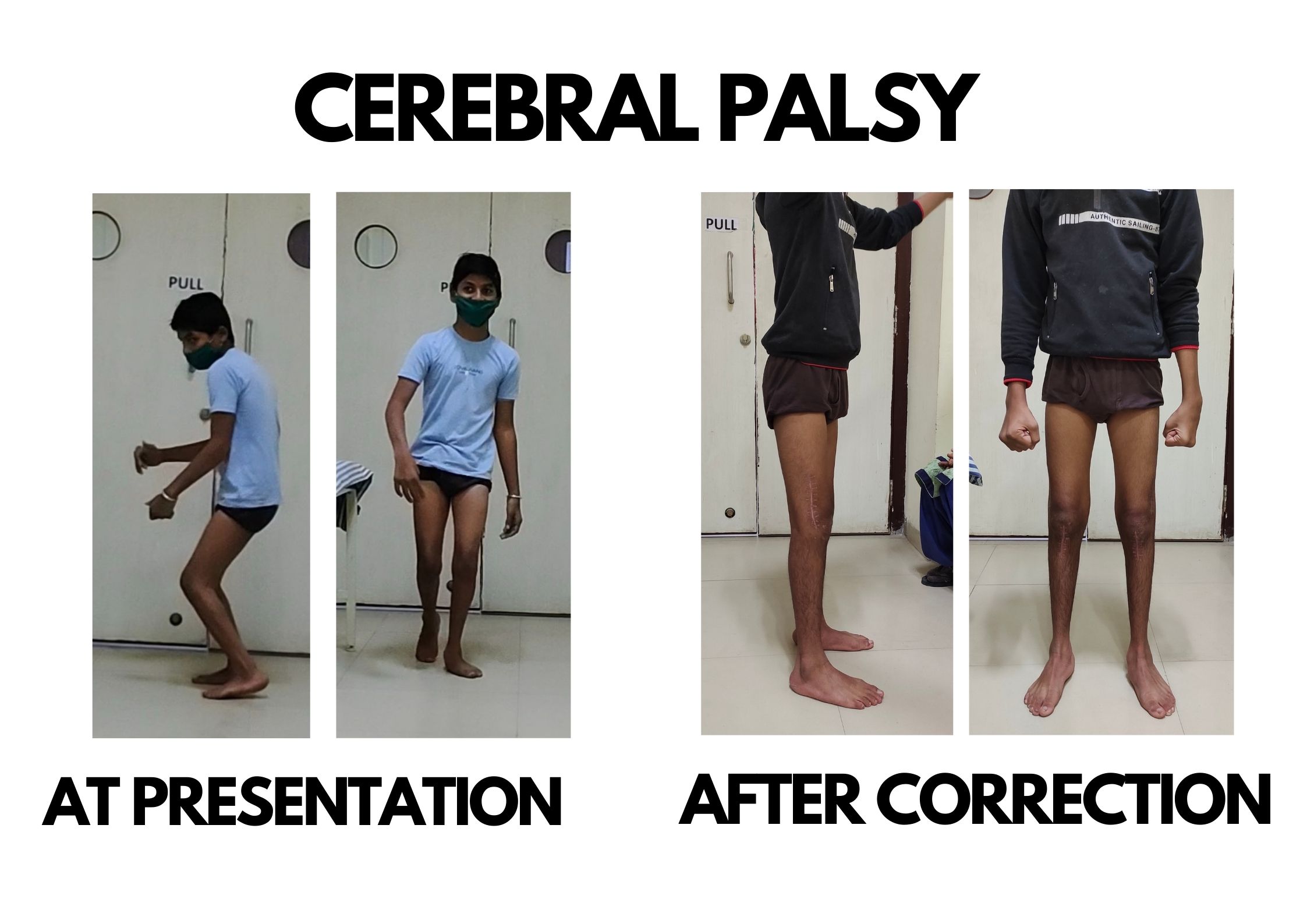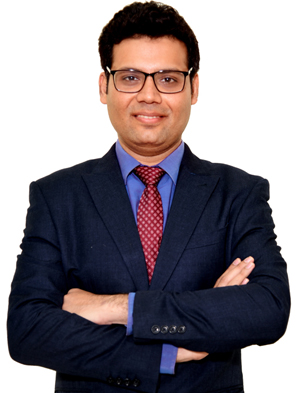8 Years Experience
MBBS, MS (Orthopaedics) FIPO (Mumbai)Consultant Paediatric Orthopaedic & Limb reconstruction surgeon.

Cerebral palsy is a group of disorders characterised by non-progressive hypoxic damage to brain resulting in progressive contractures of the musculoskeletal system. Depending upon the quantum of injury, the disability and functional status of the child can be graded.
History and Symptoms: It is frequently associated with perinatal respiratory distress leading to oxygen deficiency and damage of the part of brain controlling the musculoskeletal system of the body. History of infections, Intra uterine growth retardation( IUGR), NICU admission due to respiratory distress are a few positive findings in the history. The child can present with delay in achieving developmental milestones such as sitting with/without support, standing and walking with/without support, etc. Other symptoms which can be present are: Seizures, vision or hearing difficulties, biarticular muscle contractures, etc.
On examination, muscle tone is increased in majority of cases with or without other abnormal movements like dystonia (variable tone), chorea, athetosis, etc. These children usually have poor selective motor control with difficulty in performing simple tasks.
Gait: These children have abnormal gait due to involvement of biarticular muscles of the lower limbs. Jump knee, equinus, crouch, stiff knee are a few abnormal gait patterns seen frequently in these kids. Visual and 3d gait analysis can be done to pinpoint the abnormal muscles.
Other investigations include Mri brain to look for abnormalities in brain, EEG to look for epileptiform pattern.
Treatment: Goals of treatment depend upon the GMFCS Grade of child. In ambulatory children, goal is to make them more independent. In non ambulatory children, goal is to improve child’s hygiene with ease in handling the child by the care givers.
Physiotherapy and stretching of the tight muscles is the mainstay of treatment in CP. Regular gentle stretching, Neurodevelopmental therapy, occupational therapy, gait training, and speech therapy are required to help child achieve his/her milestones and to maintain function of the child. Braces and assistive devices (crutches, ankle foot orthosis,etc) help the child to be more functional and improve gait. In cases of dynamic contractures, botulinum toxin with or without plaster/splints can be used. In neglected cases, soft tissue releases and bony surgeries may be required.

Consultant Paediatric Orthopaedic & Limb reconstruction surgeon.
© Copyright 2020. All Rights Reserved | Powered by Dr Deepak khurana- Paediatric Orthopaedic Surgeon Crafted by CWM Technologies